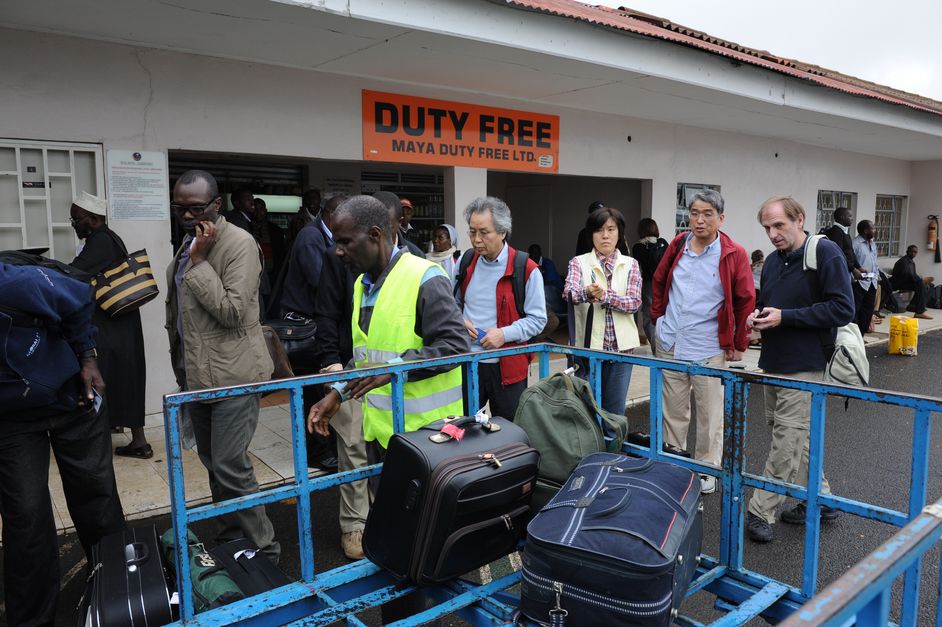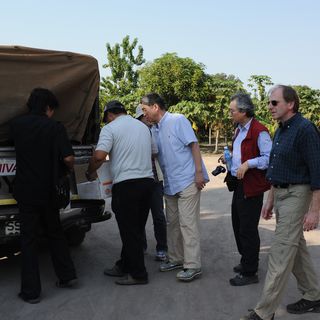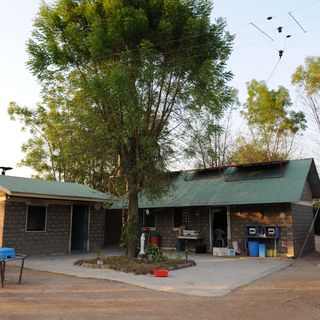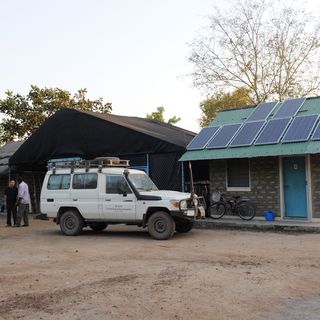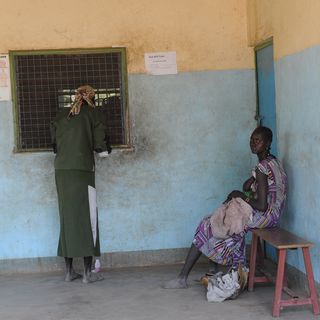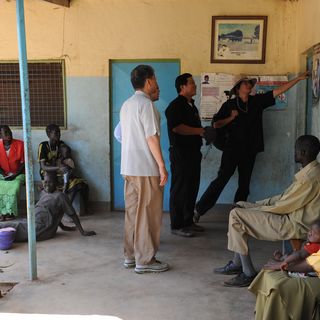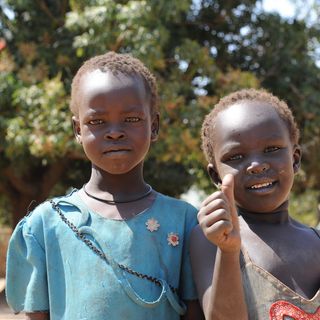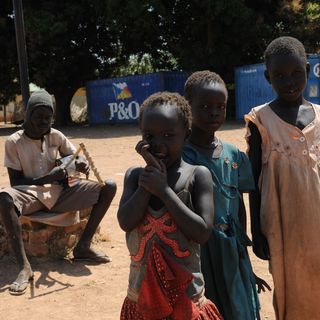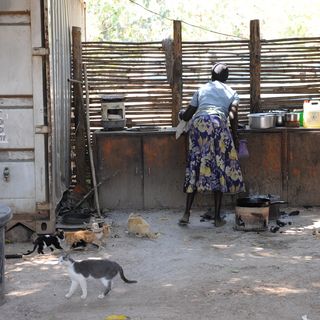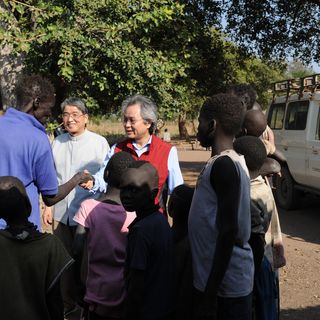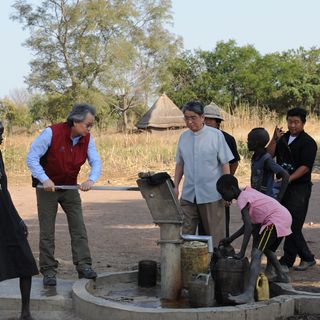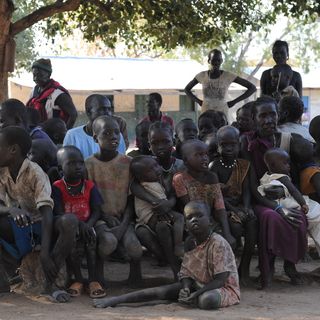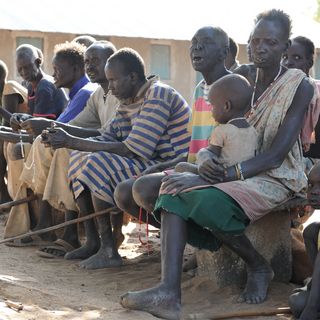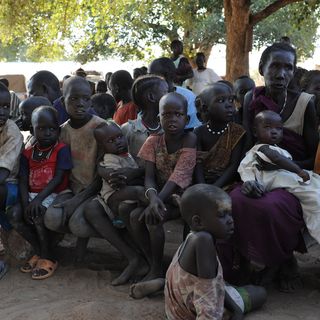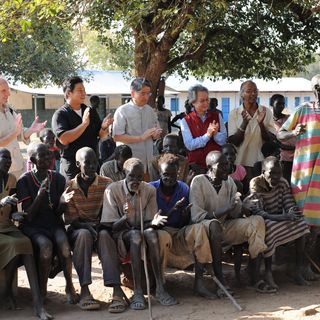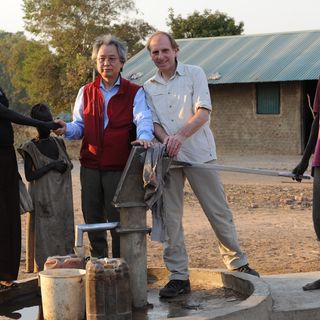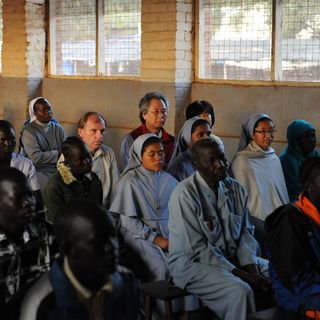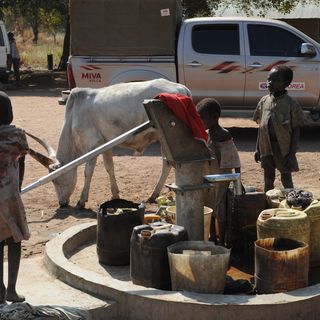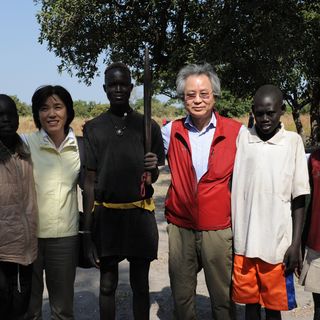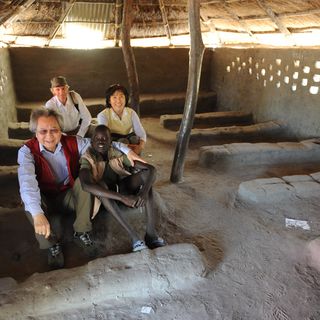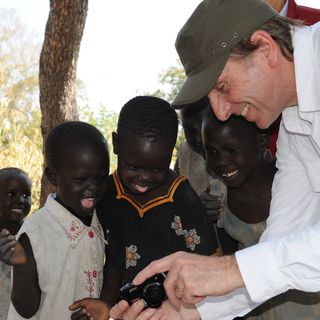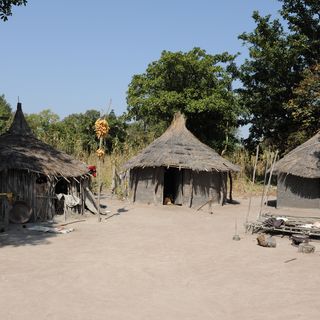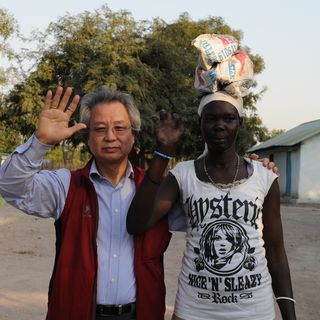2011: Travel Report Tonji, South-Sudan
After the 10th anniversary celebration of the St. Lazarus-Fonds Europe we wanted to see at first hand the progress in the projects and measures we support personally in South Sudan. We also wanted to intensify our personal contact to the people who are working on-site.
On December 4, 2011 at 6:55 a.m. we flew KLM from Frankfurt to Amsterdam. After a 3 1/2 hour wait in Amsterdam our connecting flight left for Nairobi, Kenya, at 10:35. We arrived in Nairobi at 20.40 local time (CET + 2) at the Jomo-Kenvatta-Airport. After a time consuming check-in procedure which included the application for a transit visa for the South Sudan and the associated waiting period, we were finally able to reach our small pension in the inner city of Nairobi three hours later. We were surprised by the comfortable cool temperature at this time of year.
On the following Monday, December 5, 2011, we flew at 8 a.m. on towards Rumbek in South Sudan. The airplane was a small Beechcraft, which had already made uncountable flights to Kenya and Sudan. After 2 ½ hours we made an interim stop at a small border airport in northern Kenya, very close to the border to South Sudan. From there we continued to Rumbek. The flight lasted more than two hours, and arrived in the early afternoon. The machine landed on the red dirt track and immediately we had the feeling of being in another world. There was a UN helicopter at the airport, which the UN soldiers stationed there use to check and if possible prevent the fighting which continually flares up there between North and South Sudan.
The arrival procedures were just as improvised as they were time consuming. The immigration authorities were all in a small building with a single room, in which approximately six persons dealt with the entry formalities. The procedure included baggage check, visa issuance, and questions about the reasons for our trip, and lasted about two hours. Two priests from the diocese Rumbek waited for us in their jeeps. Prior to our continuing further to the mission station Agangrial the priests took the opportunity to purchase provisions at the local market.
Rumbek has the feel of a small provincial city, and therefore the people from the surrounding areas head there in droves. There are no asphalt streets, even the marketplace was just a dusty square. Here you can purchase everything you need for daily life: food, old bicycles, dried fish. We noticed in particular the many children and teenagers, who ran around everywhere and obviously had nothing to do. Overall the first impression was lively but depressing. The dirt and the garbage on the streets were conspicuous. Together with the two priests and other travellers we headed with both vehicles on the 4-hour trip to Agangrial.
The dirt road is a relic from the English colonial period. Right and left of the road people and animals were walking. At larger intervals we saw small groups of mud huts. Sometimes only one, sometimes two or more. These are usually occupied by family groups. The round huts are made of mud bricks and have a straw roof as protection against the rain and heat. They are usually not larger than 10 square meters. The area around the hut is always swept clean by the women, so that from an aerial perspective they look like circular discs. We were told that this serves to keep the many snakes away from the houses. In the better cases these places were protected with bamboo fences.
We did not often encounter another vehicles during the drive. After about two hours our driver suddenly turned left and drove straight for the bush. From here there was only cross-country. Now and then children appeared, who were keeping watch on goats and cattle. In the meantime it was late afternoon and it very quickly began to get dark, because close to the equator the sun goes down quickly. We reached the mission station Agangrial just before sunset. The station consists of simple houses and is far from civilization. The water supply comes from its own well and water is pumped into a large tower. Sewage is collected in a septic tank. Electrical energy is collected via solar cells on the roofs, so that there is briefly enough time daily to run the internet.
During the dry season life mostly takes place outdoors. Even cooking is done outdoors, with charcoal and an open fire. The basic food is sorghum, a kind of grain, which has many uses. Occasionally a chicken is slaughtered, while cows have a special standing. Their number says something about the standing and fortune of a family clan. The rooms which we stayed in were simply outfitted, but clean by local standards and with running water. Showers and toilets were in a separate building. Getting there in the dark definitely required a flashlight. There is no electricity in the area and therefore also no television or radio. The men from the surrounding villages met in the evenings outside of the mission station to play drums and for ritual dances. These rhythmic drums could be heard every evening until after midnight.
In the mornings we were wakened by the howling of hyenas. When we consider that one of the priests lived here alone for months when the mission station was founded, then we can imagine what a challenge it would have been for any of us. After our first night in Agangrial we left early the next morning towards Tonji to visit the village where the lepers live. The day started with a church service in the nearby mission church, accompanied by drums and rhythmic song. Primarily young people took part in the service. The route to Tonji led first of all back through the bush to the main road. From there the trip lasted another two hours. Due to this being the dry season the temperatures were comfortable, the thermometer moved above 30°, but the humidity of about 35% was very dry. Our intention was to visit the Salesian Mission station, which is led by an Indian priest. The mission has a small infirmary, in which Indian nurses and a few locally instructed helpers work. The lepers wait patiently on roofed banks in the open air. Due to the great heat we could only visit the leper village in the late afternoon. It is about 30 minutes drive outside of Tonji and is completely exposed in the wide Savannah. In the rainy season the surrounding area is regularly flooded.
Since our visit was expected all the residents were impatiently waiting for our arrival. Those who were not gathered in the main square came out of their huts as soon as we drove in with our jeeps. We immediately felt the joy and expectations which were connected with our visit. We were accompanied by a local translator so that we could communicate with the people. All the residents gathered under the only tree in the square between the houses. They greeted us with song and related their personal wishes. Afterwards we went into their personal quarters, none of them larger than 8 square meters. Often these rooms are used by up to 10 persons.
We brought wool blankets as gifts. People could cover themselves with them at night or use them as a mat on the earth floor. The rooms – if we can call them that – have almost no furnishings, everything takes place on the ground. There is a small hole to be used as a toilet in the far corner in the room. In each building there are five to six rooms, all at ground level. In order for the people to be able to stay outside in the heat, they would like a canopy or projecting roof on their building. This would also give protection from strong rain. While we were still there we decided to build this projecting roof, and also a toilet house to improve the hygienic conditions. Additionally a community house should be erected, to be used as a school and for church services. Some time ago a well for water was built with funds from St. Lazarus-Fonds, as was another residential building. The well is also used by people who live in the surrounding villages.
We spent a night in Tonji, the rooms there were not comparable at all to those in Agangrial. There was no running water and there were many large and small insects lurking in the rooms. We were glad when the night was over. Our route back to Agangrial took us to the Comboni missionaries in Chuibet, who run a technical school for professional education and give practical lessons. Those church charities and the religious who are active in the Rumbek diocese are often separated by large distances, but work together on various projects in the region.
On the next day – Thursday - we visited the villages which surround the mission station. We wanted to form a personal impression of the lives of the locals. We learned how they keep their cattle, how they prepare their food, and plant their fields. In the afternoon we visited a hospital for lepers and those ill with tuberculosis, which is very close to the mission station. The word “hospital” is not appropriate in this context, because there is no longer a doctor. The nursing and care is done by nuns with help from local assistants. The patients lie on simple field beds and for the most part are left to themselves. Some children in the area have better conditions. There is a kind of consultation each evening, in which the priest and a nun, who do this service voluntarily, treat the children. The priests have acquired this medical knowledge in a education which they received for their own protection and to take care of themselves. For serious cases the next hospital is in Nairobi, which is more than a days travel away by airplane.
The next day we started the return trip to Germany in the same manner in which we had come. The exit from Sudan required the same time-consuming formalities as did the entry, including long waits in great heat. Since we only arrived very late in Nairobi there was an additional day of waiting. The flight to Amsterdam was only in the evening of the following day. We arrived back in Frankfurt on Sunday morning at 9:30 a.m.
The journey to South Sudan was both a trip to a past age and also to another world. We met many people who needed various kinds of assistance, but they were still friendly, open and curious. We ascertained that our assistance is falling on fertile soil and that it is worthwhile. Considering the great need and the wide-spread poverty, there is a lot to do in South Sudan. As we saw, many people have to survive on one meal per day. The percentage of the population younger than 30 is around 70% in South Sudan. At the same time the illiteracy rate among children and teenagers is shockingly high. These people constitute the new foundation of the still young republic of South Sudan. Therefore we give support for educational measures a great priority and see it as a focus of our work in the future.
